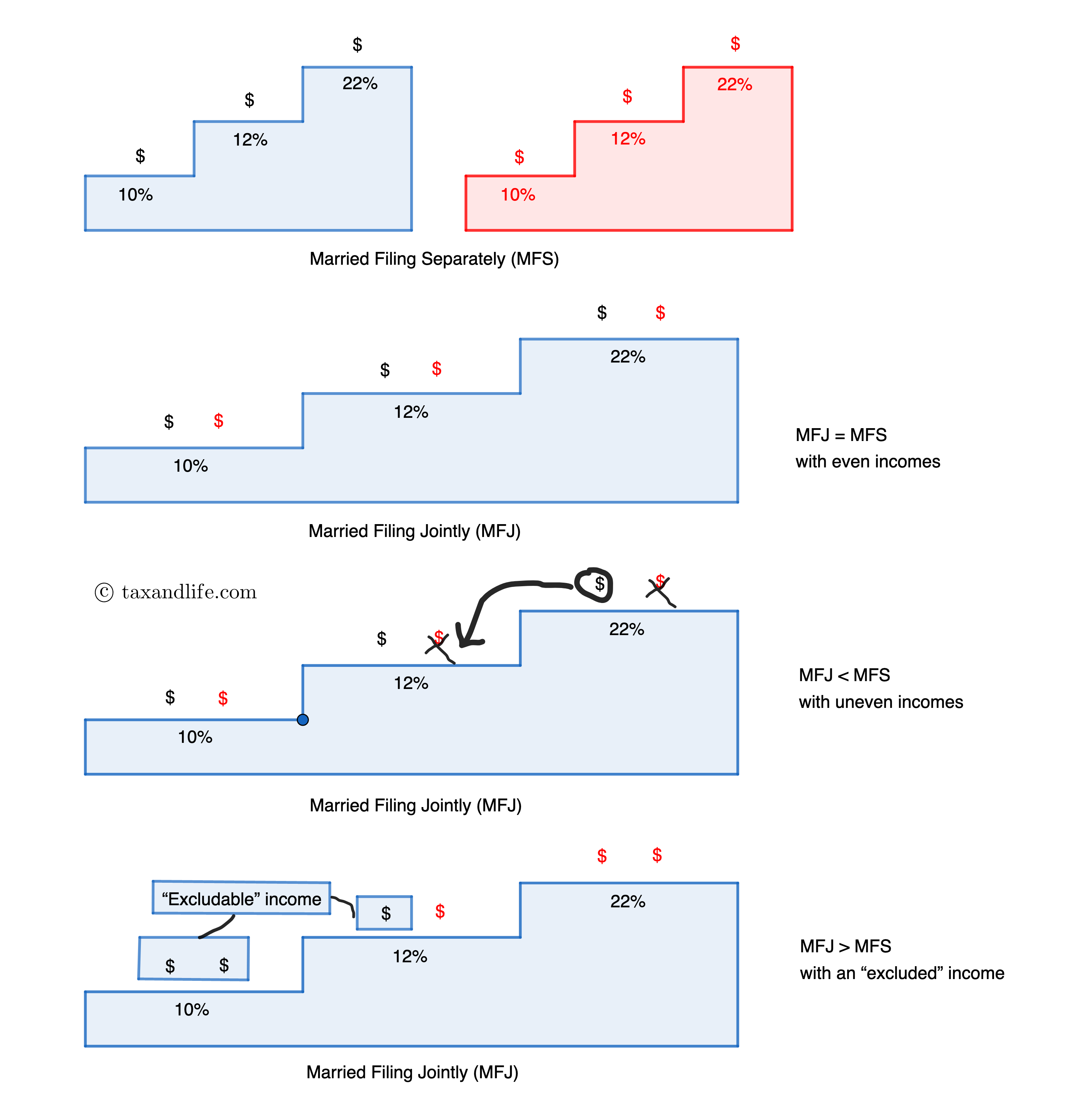To file separately or jointly, that is not the question
Married individuals often ask me whether they should file taxes separately or jointly. This post aims to clarify this issue.
The tax brackets for joint filers widen. Taking the tax rate table for 2022 as an example, the 10% bracket for both single and married filing separately is $0 - $10,275, while for joint filers, it is $0 - $20,550, exactly twice that of single filers. This rule no longer applies in the higher-income brackets (35%+). As the brackets widen, the combined income of joint filers generally increases. Whether joint filers pay more or less tax depends on whether the total income in each bracket increases or decreases. The diagram below provides an intuitive explanation.

To summarize:
(a) If a married couple has incomes, the results of filing separately and jointly are similar.
(b) If one spouse has no income or a lower income, the higher-earning spouse can use the unfilled tax brackets (“stairs”) of the lower-earning spouse, reducing the overall tax liability. This does not apply to the situation when both spouses have reached the highest tax brackets because no one can leave room on lower tax bracket to the other.
(c) If one spouse has foreign earned income, even thought it is excluded from the total income, it still occupies the lower stairs, and the other spouse’s income will have to go to a higher bracket, increasing the overall tax liability.
The above analysis is based purely on the tax consequences, but there are situations where one spouse owes outstanding child support payments or has other complicated issues, and the other spouse does not to get involved, then the only option is to file separately. If they file jointly, regardless of whose problem it is, they are jointly responsible. This, howver, is a legal issue rather than a mathematical problem.
As the saying goes, the devil is in the details. The actual situation is more complicated, such as many deductions being tied to filing status and income, and there may not be an analytical solution. If the situation is not clear, it is better to actually calculate it. Fortunately, my professional software can calculate both ways and make comparisons. I hope this post can provide you with a conceptual understanding.